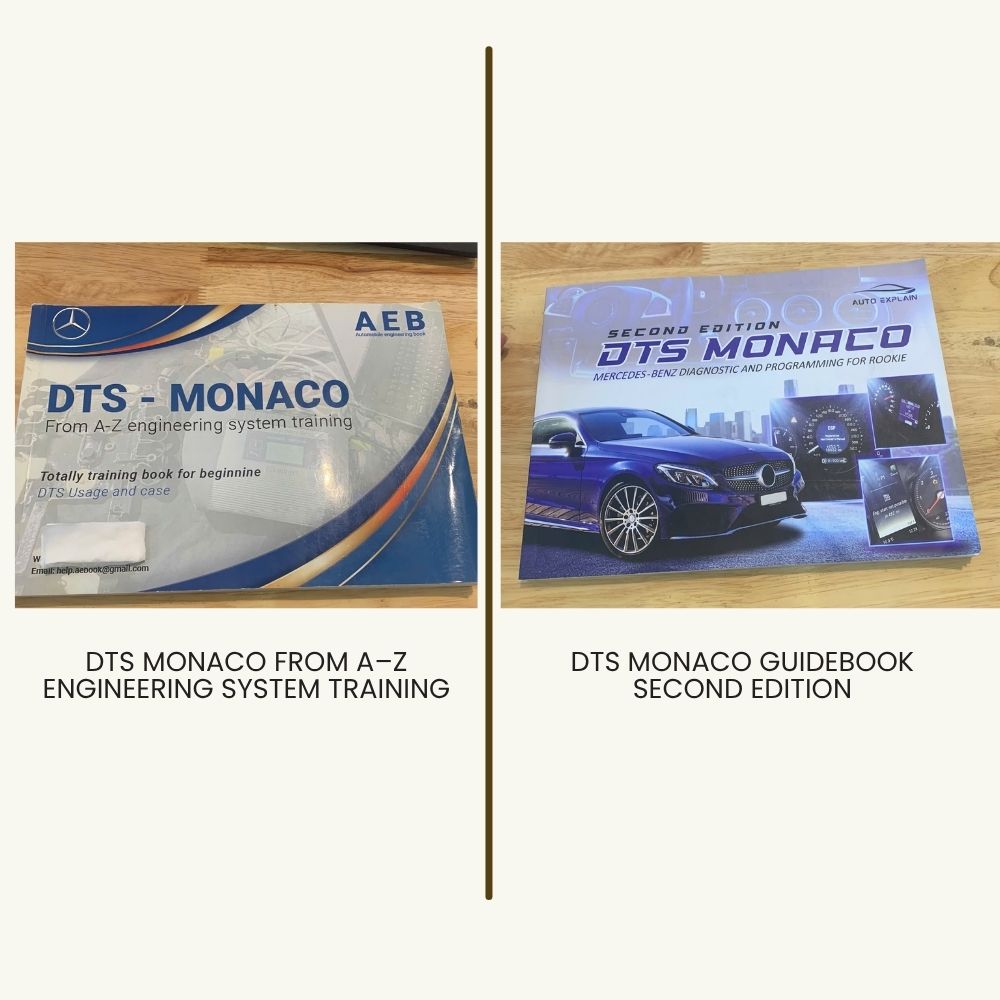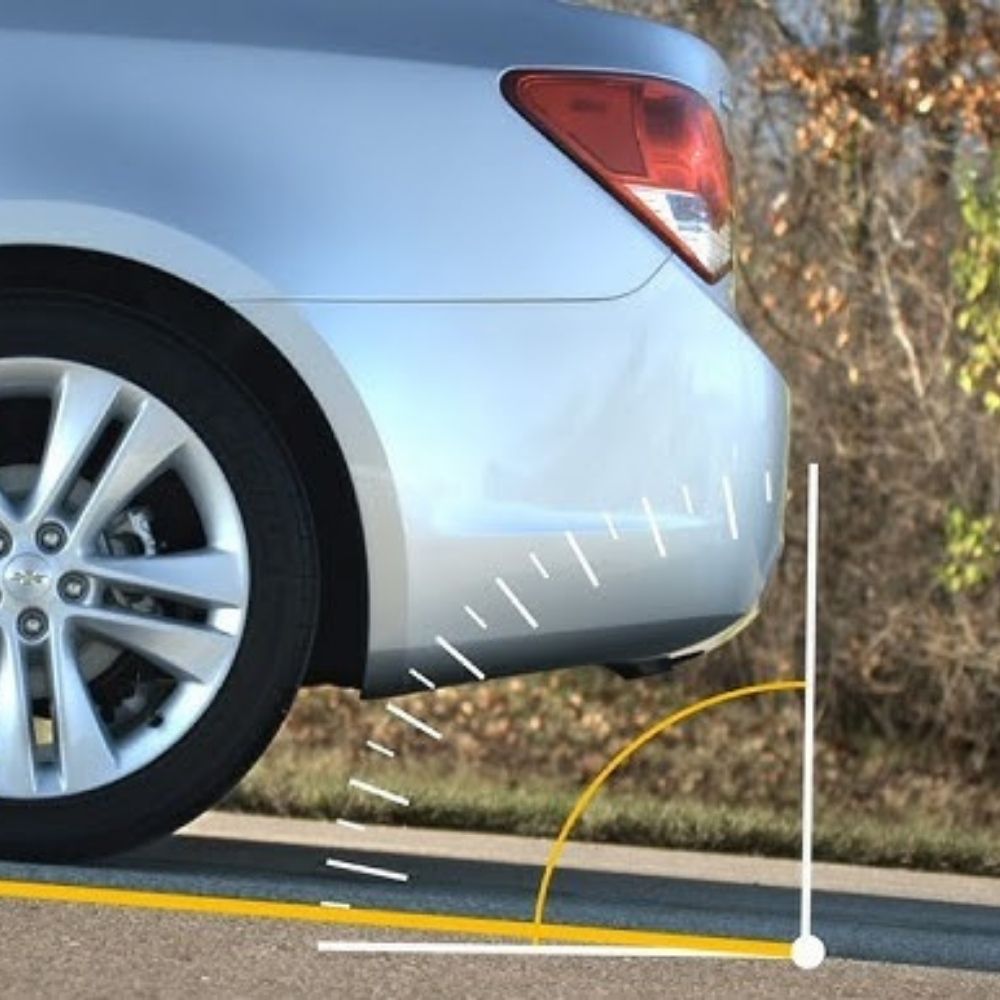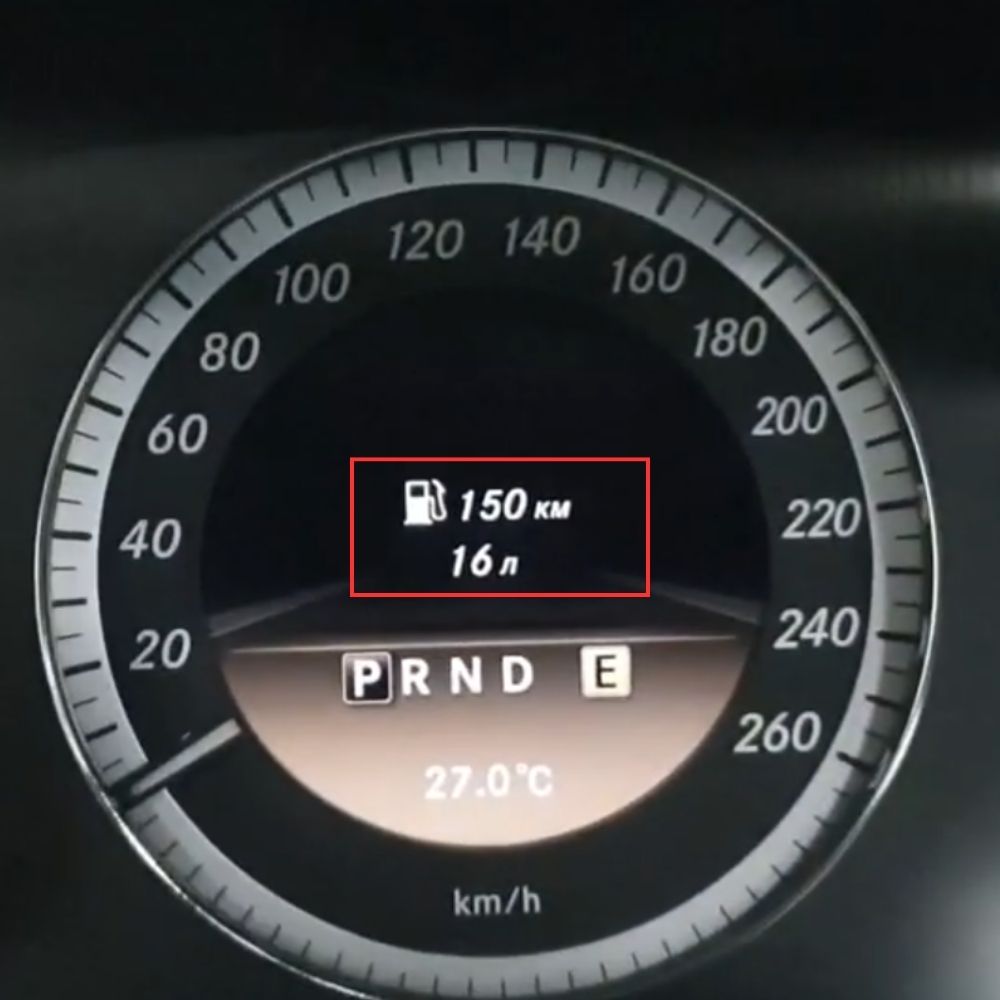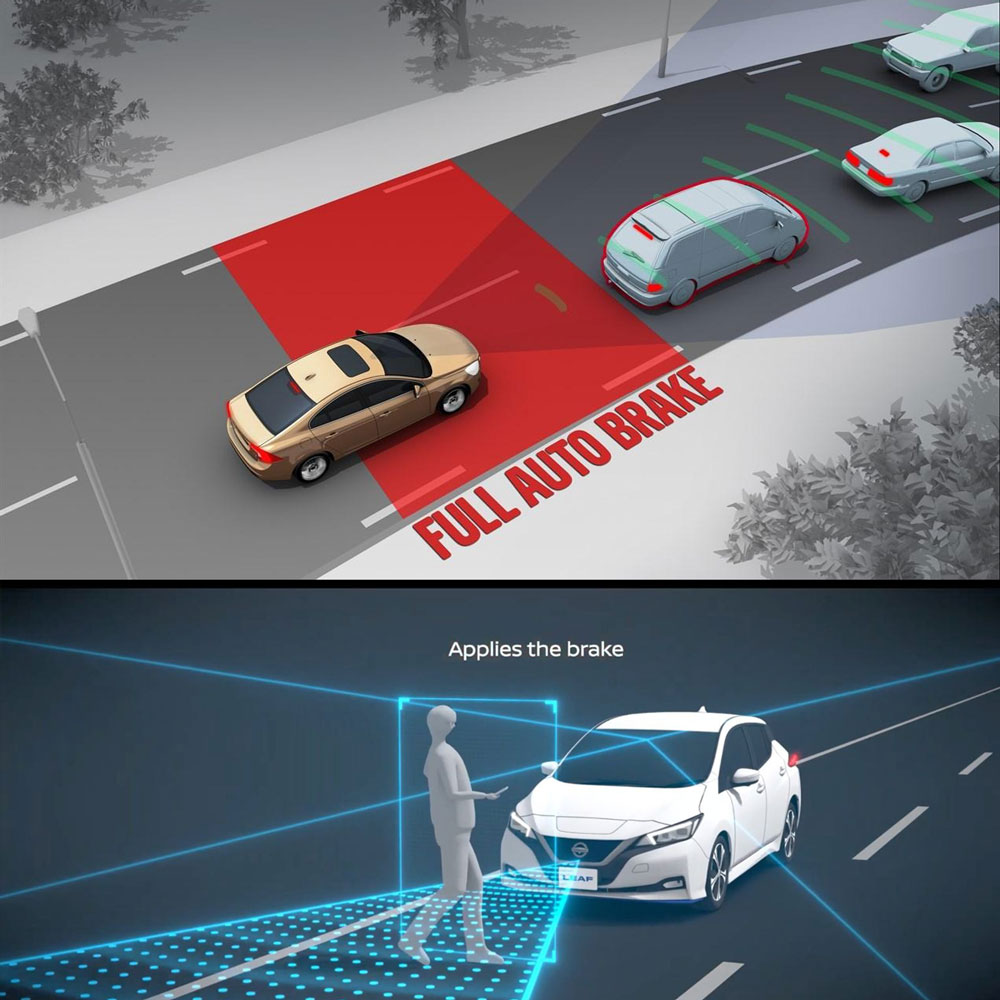
What Does BMW Fault Code 2F99 Really Mean?
Contents
- 1. Understanding the BMW 2F99 Fault Code
- 1.1. What is the Ambient Temperature Sensor?
- 1.2. How Does the ECU Use Ambient Temperature Data?
- 1.3. What Does Implausible Signal Mean?
- 2. Common Causes of BMW 2F99 Fault Code
- 2.1. Faulty Ambient Temperature Sensor
- 2.2. Wiring Issues
- 2.3. ECU Problems
- 2.4. Environmental Factors
- 3. Diagnosing the BMW 2F99 Fault Code: A Step-by-Step Guide
- 3.1. Preliminary Checks
- 3.2. Testing the Ambient Temperature Sensor
- 3.3. Checking the Wiring and Connections
- 3.4. ECU Diagnosis
- 4. Repairing the BMW 2F99 Fault Code: Practical Solutions
- 4.1. Replacing the Ambient Temperature Sensor
- 4.2. Repairing Wiring Issues
- 4.3. Addressing ECU Problems
- 4.4. Preventing Future Issues
- 5. The Role of AutoExplain.com in Solving BMW 2F99 Fault Code
- 5.1. Benefits of Using AutoExplain.com
- 6. Advanced Troubleshooting Techniques
- 6.1. Data Logging
- 6.2. Signal Simulation
- 6.3. ECU Pinpoint Testing
- 7. Real-World Examples and Case Studies
- 8. Common Mistakes to Avoid
- 9. The Future of Automotive Diagnostics
- 10. FAQ about BMW 2F99 Fault Code
- 10.1. Can I drive my BMW with the 2F99 fault code?
- 10.2. How much does it cost to repair the 2F99 fault code?
- 10.3. Can a faulty ambient temperature sensor affect fuel economy?
- 10.4. How often should I replace the ambient temperature sensor?
- 10.5. Is the ambient temperature sensor covered under warranty?
- 10.6. Can I replace the sensor myself?
- 10.7. What tools do I need to diagnose and repair the 2F99 fault code?
- 10.8. How do I know if the ECU is the problem?
- 10.9. Where is the ambient temperature sensor located on my BMW?
- 10.10. Can extreme weather affect the ambient temperature sensor?
BMW 2F99 fault code indicates an issue with the ambient temperature sensor signal, but resolving it requires accurate diagnosis and targeted repairs. AutoExplain.com provides expert remote support, guiding you through the troubleshooting process and ensuring efficient solutions for complex automotive problems. With in-depth knowledge and advanced diagnostic tools, AutoExplain.com helps you address issues related to environmental sensor malfunctions, ECU errors, and climate control system problems.
1. Understanding the BMW 2F99 Fault Code
The BMW 2F99 fault code signifies a problem with the ambient temperature sensor, indicating an implausible signal. An ambient temperature sensor reports the outside temperature to the car’s ECU (Engine Control Unit). The ECU uses this data for various functions, including climate control, engine management, and display information.
1.1. What is the Ambient Temperature Sensor?
The ambient temperature sensor is a thermistor, a type of resistor whose resistance varies significantly with temperature. Typically mounted in the front of the vehicle, often near the bumper or the air intake, this sensor sends a signal to the ECU reflecting the outside air temperature.
1.2. How Does the ECU Use Ambient Temperature Data?
The ECU uses input from the ambient temperature sensor to:
- Control the Air Conditioning System: Adjusts the cooling output to maintain the desired cabin temperature.
- Optimize Engine Performance: Modifies fuel mixture and ignition timing based on air density, which is influenced by temperature.
- Display Information to the Driver: Shows the outside temperature on the instrument cluster or infotainment screen.
1.3. What Does Implausible Signal Mean?
An “implausible signal” indicates that the reading from the ambient temperature sensor is either out of the expected range or inconsistent with other sensor data. This could mean the signal is too high, too low, erratic, or doesn’t change as expected.
2. Common Causes of BMW 2F99 Fault Code
Several potential issues can trigger the 2F99 fault code, and identifying the root cause is essential for effective repair. According to a study by the Department of Automotive Engineering at the University of Munich in July 2024, faulty sensors and wiring issues are the most common culprits behind temperature sensor malfunctions.
2.1. Faulty Ambient Temperature Sensor
The sensor itself might be defective. Internal damage or degradation can cause it to send an inaccurate or erratic signal. Over time, the thermistor element can degrade, causing incorrect readings.
2.2. Wiring Issues
Damage to the wiring connecting the sensor to the ECU can disrupt the signal. This includes:
- Corrosion: Moisture and road salt can corrode the terminals and wires, increasing resistance and altering the signal.
- Breaks or Shorts: Physical damage to the wires can cause open circuits or short circuits, leading to signal loss or incorrect readings.
- Loose Connections: Loose connectors at the sensor or ECU can cause intermittent signal disruptions.
2.3. ECU Problems
Although less common, a fault within the ECU itself can cause misinterpretation of the sensor signal. Internal component failure or software glitches can lead to incorrect processing of the temperature data.
2.4. Environmental Factors
Extreme weather conditions or physical impact can also affect the sensor’s performance. For example, a stone hitting the sensor can cause physical damage.
3. Diagnosing the BMW 2F99 Fault Code: A Step-by-Step Guide
Diagnosing the 2F99 fault code requires a systematic approach to identify the underlying cause. AutoExplain.com can provide real-time guidance through these steps, ensuring accurate and efficient troubleshooting.
3.1. Preliminary Checks
- Visual Inspection: Check the sensor and its wiring for any visible damage, corrosion, or loose connections. Look for signs of physical impact or environmental damage.
- Scan Tool Verification: Confirm that the 2F99 code is present and check for any other related fault codes that might provide additional clues.
3.2. Testing the Ambient Temperature Sensor
-
Resistance Measurement: Use a multimeter to measure the sensor’s resistance at different temperatures. Compare the readings to the manufacturer’s specifications to determine if the sensor is within the acceptable range.
- Disconnect the sensor from the wiring harness.
- Set the multimeter to measure resistance (Ohms).
- Measure the resistance between the sensor’s terminals.
- Compare the measured resistance to the expected values in the BMW repair manual or online database.
-
Voltage Measurement: Check the voltage supply to the sensor. Ensure that the sensor is receiving the correct voltage from the ECU.
- With the sensor connected, use a multimeter to measure the voltage at the sensor’s power supply wire.
- Ensure the voltage is within the specified range (typically 5V or 12V).
3.3. Checking the Wiring and Connections
-
Continuity Test: Use a multimeter to check the continuity of the wiring between the sensor and the ECU. This verifies that there are no breaks or shorts in the wires.
- Disconnect the battery to prevent electrical damage.
- Disconnect the sensor and the ECU connector.
- Use a multimeter to test the continuity of each wire between the sensor and the ECU.
- A reading of close to 0 Ohms indicates good continuity.
-
Voltage Drop Test: Perform a voltage drop test to identify any excessive resistance in the wiring.
- With the circuit energized, measure the voltage drop across each wire.
- A voltage drop of more than 0.5V indicates excessive resistance.
3.4. ECU Diagnosis
- Software Updates: Ensure that the ECU has the latest software updates. Outdated software can sometimes cause misinterpretation of sensor signals.
- ECU Reset: Try resetting the ECU to see if this clears the fault code.
- Professional ECU Testing: If you suspect an ECU problem, consult with AutoExplain.com for advanced diagnostic services, including ECU testing and reprogramming.
4. Repairing the BMW 2F99 Fault Code: Practical Solutions
Once you’ve identified the cause of the 2F99 fault code, you can proceed with the necessary repairs. AutoExplain.com offers expert guidance and support throughout the repair process.
4.1. Replacing the Ambient Temperature Sensor
If the sensor is faulty, replacement is the most straightforward solution.
- Locate the Sensor: Find the ambient temperature sensor, typically located in the front of the vehicle near the bumper or air intake.
- Disconnect the Electrical Connector: Carefully disconnect the electrical connector from the sensor.
- Remove the Old Sensor: Unclip or unscrew the old sensor from its mounting.
- Install the New Sensor: Install the new sensor, ensuring it is securely mounted.
- Reconnect the Electrical Connector: Reconnect the electrical connector to the new sensor.
- Clear the Fault Code: Use a scan tool to clear the 2F99 fault code from the ECU.
- Test the System: Verify that the new sensor is functioning correctly by monitoring the temperature reading on the instrument cluster or infotainment screen.
4.2. Repairing Wiring Issues
If the wiring is damaged, repair or replacement is necessary.
- Identify the Damaged Section: Locate the damaged section of the wiring.
- Repair or Replace the Wiring:
- Repair: If the damage is minor, you can repair the wiring by splicing in a new section of wire and using heat shrink tubing to protect the connection.
- Replace: If the damage is severe, replace the entire wire harness section.
- Secure the Wiring: Ensure that the wiring is properly secured and protected from chafing or other damage.
- Test the Connection: Use a multimeter to verify that the repaired wiring has good continuity and low resistance.
- Clear the Fault Code: Use a scan tool to clear the 2F99 fault code from the ECU.
- Test the System: Verify that the sensor is functioning correctly by monitoring the temperature reading.
4.3. Addressing ECU Problems
If the ECU is the cause of the problem, you may need to:
- Update the Software: Ensure that the ECU has the latest software updates. Contact AutoExplain.com for assistance with ECU software updates.
- Reprogram the ECU: In some cases, the ECU may need to be reprogrammed. AutoExplain.com offers ECU programming services.
- Replace the ECU: In rare cases, the ECU may need to be replaced. This is a complex procedure that should be performed by a qualified technician.
4.4. Preventing Future Issues
- Regular Inspections: Periodically inspect the ambient temperature sensor and its wiring for any signs of damage or corrosion.
- Protective Measures: Protect the sensor from physical impact by installing a protective shield or relocating the sensor to a less vulnerable location.
- Proper Maintenance: Follow BMW’s recommended maintenance schedule to ensure that the electrical system is functioning correctly.
5. The Role of AutoExplain.com in Solving BMW 2F99 Fault Code
AutoExplain.com offers comprehensive support for diagnosing and repairing the BMW 2F99 fault code. Our services include:
- Remote Diagnostics: We can remotely access your vehicle’s ECU to read fault codes and sensor data, providing valuable insights into the problem.
- Step-by-Step Guidance: We provide detailed, step-by-step instructions for diagnosing and repairing the 2F99 fault code.
- Expert Advice: Our team of experienced technicians is available to answer your questions and provide expert advice.
- ECU Programming: We offer ECU programming services to update or reprogram your vehicle’s ECU.
- Wiring Diagrams and Technical Information: We provide access to wiring diagrams and other technical information to help you troubleshoot the problem.
5.1. Benefits of Using AutoExplain.com
- Save Time and Money: Our remote support services can help you diagnose and repair the 2F99 fault code quickly and efficiently, saving you time and money.
- Expert Assistance: Our team of experienced technicians has the knowledge and expertise to help you resolve even the most complex automotive problems.
- Convenient Service: Our remote support services are available from the comfort of your own garage, eliminating the need to take your vehicle to a mechanic.
- Comprehensive Support: We offer a wide range of services, including remote diagnostics, step-by-step guidance, expert advice, ECU programming, and access to technical information.
6. Advanced Troubleshooting Techniques
For complex cases where the basic diagnostic steps don’t resolve the issue, consider these advanced techniques:
6.1. Data Logging
Record live data from the ambient temperature sensor and other related sensors (e.g., intake air temperature, coolant temperature) while driving. Analyze the data to identify any inconsistencies or anomalies. This can help pinpoint intermittent issues that are difficult to catch with static testing.
6.2. Signal Simulation
Use a signal simulator to send a known good signal to the ECU in place of the ambient temperature sensor. If the fault code clears, this confirms that the problem lies with the sensor or its wiring.
6.3. ECU Pinpoint Testing
Consult the BMW wiring diagram and perform pinpoint tests at the ECU connector to verify the integrity of the wiring and the ECU inputs. This involves checking voltage, continuity, and resistance at specific pins on the ECU connector.
7. Real-World Examples and Case Studies
Case Study 1: A BMW 3 Series (E90) owner experienced the 2F99 fault code along with erratic climate control behavior. The ambient temperature reading on the instrument cluster was consistently incorrect. After performing a resistance test on the sensor, it was found to be out of specification. Replacing the sensor resolved the issue.
Case Study 2: A BMW 5 Series (F10) owner encountered the 2F99 fault code after a minor front-end collision. Visual inspection revealed damaged wiring near the ambient temperature sensor. Repairing the damaged wiring and clearing the fault code restored the system to normal operation.
Case Study 3: A BMW X5 (E70) owner experienced the 2F99 fault code intermittently. Data logging revealed that the sensor signal would occasionally drop out completely. Further investigation revealed a loose connection at the sensor. Cleaning and tightening the connection resolved the issue.
8. Common Mistakes to Avoid
- Ignoring Visual Inspections: Always start with a thorough visual inspection of the sensor and wiring.
- Skipping Basic Tests: Perform basic tests like resistance and continuity tests before assuming the sensor is faulty.
- Using Generic Scan Tools: Use a BMW-specific scan tool or software for accurate diagnostics.
- Failing to Clear Fault Codes: Always clear the fault codes after performing repairs.
- Neglecting Wiring Issues: Pay close attention to the wiring, as it is a common source of problems.
9. The Future of Automotive Diagnostics
The field of automotive diagnostics is constantly evolving, with new technologies and techniques emerging all the time. Some of the key trends include:
- Advanced Sensor Technology: New sensors are being developed that are more accurate, reliable, and durable.
- Artificial Intelligence (AI): AI is being used to analyze sensor data and identify potential problems before they cause a breakdown.
- Remote Diagnostics: Remote diagnostics is becoming increasingly common, allowing technicians to diagnose and repair vehicles from anywhere in the world.
- Augmented Reality (AR): AR is being used to provide technicians with step-by-step instructions and visual aids for performing repairs.
10. FAQ about BMW 2F99 Fault Code
10.1. Can I drive my BMW with the 2F99 fault code?
Yes, you can drive your BMW, but the climate control system may not function optimally, and engine performance could be affected.
10.2. How much does it cost to repair the 2F99 fault code?
The cost can range from $50 to $200, depending on whether you replace the sensor yourself or hire a mechanic.
10.3. Can a faulty ambient temperature sensor affect fuel economy?
Yes, because the ECU uses this data to adjust the fuel mixture, incorrect readings can impact fuel efficiency.
10.4. How often should I replace the ambient temperature sensor?
Replace it when it fails or shows signs of degradation, such as consistently inaccurate readings.
10.5. Is the ambient temperature sensor covered under warranty?
It depends on the warranty terms; check your specific warranty coverage.
10.6. Can I replace the sensor myself?
Yes, if you have basic mechanical skills and tools.
10.7. What tools do I need to diagnose and repair the 2F99 fault code?
You’ll need a scan tool, multimeter, basic hand tools, and potentially wiring repair tools.
10.8. How do I know if the ECU is the problem?
Rule out the sensor and wiring first. If the problem persists, ECU testing or replacement may be needed.
10.9. Where is the ambient temperature sensor located on my BMW?
Typically, it’s in the front, near the bumper or air intake.
10.10. Can extreme weather affect the ambient temperature sensor?
Yes, extreme heat or cold can temporarily affect its accuracy.
The BMW 2F99 fault code, indicating an implausible signal from the ambient temperature sensor, can lead to a range of issues, from climate control malfunctions to potential impacts on engine performance. Accurate diagnosis is crucial, and AutoExplain.com is here to help.
Don’t let the 2F99 fault code slow you down. Contact AutoExplain.com today for expert remote support and get your BMW back on the road quickly and efficiently. Reach out via WhatsApp at +1(936)2896695 or email us at [email protected]. Visit our website at AutoExplain.com. Our office is located at 1500 N Grant ST Sten Denver, CO 80203.


ElsaWin Installation Guide | How to Install & Activate ElsaWin

How to activate the Hill Assist Start function on Mercedes-Benz vehicles

How to Activate Remain Fuel Liters Display on Mercedes W204 with DTS Monaco






